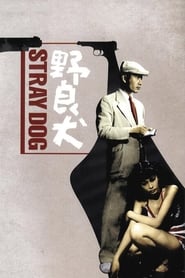Eizo Tanaka
Tanaka initially trained as a stage actor in the shingeki movement under Kaoru Osanai, but eventually joined the Nikkatsu film studio in 1917. He debuted as a director in 1918 but mostly had to work with shinpa stories, not the shingeki techniques he was used to although two early films, The Living Corpse (Ikeru shikabane) and The Cherry Orchard (Sakura no sono) were based on Tolstoy and Chekhov respectively.[3] Working in parallel with the Pure Film Movement, Tanaka made two films, Kyōya eirimise (1922) and Dokuro no mai (1923), based on his own screenplays, that were highly praised for their cinematic technique.[1] He remained a rather conservative filmmaker and still used oyama (male actors) in female roles, including in his masterpiece Kyōya eirimise, a melodrama about a merchant's destructive love for a geisha. He used actresses for the first time in Dokuro no mai, a story of a monk reminiscing about his youth and early loves.

Stray Dog
as Old DoctorA bad day gets worse for young detective Murakami when a pickpocket steals his gun on a hot,...
Movie pageThe Wild Geese
as ZenkichiA young woman, who must support her father as a middle-aged man's mistress, finds herself...
Movie pageThe Blue Mountains: Part I
as Principal TakedaTeacher Yukiko finds herself in opposition to conservative faculty and villagers after defending...
Movie pageTill We Meet Again
as uncreditedSaburo and Keiko fall in love with each other but the tide of war separates them.
Movie pageTower of Lilies
as uncreditedA group of Okinawan high school girls are drafted as nurses during the American invasion of the...
Movie pageStreet of Violence
as Hardware dealerAn attempt is made to suppress a journalist's investigation of collusion between a rural police...
Movie page





